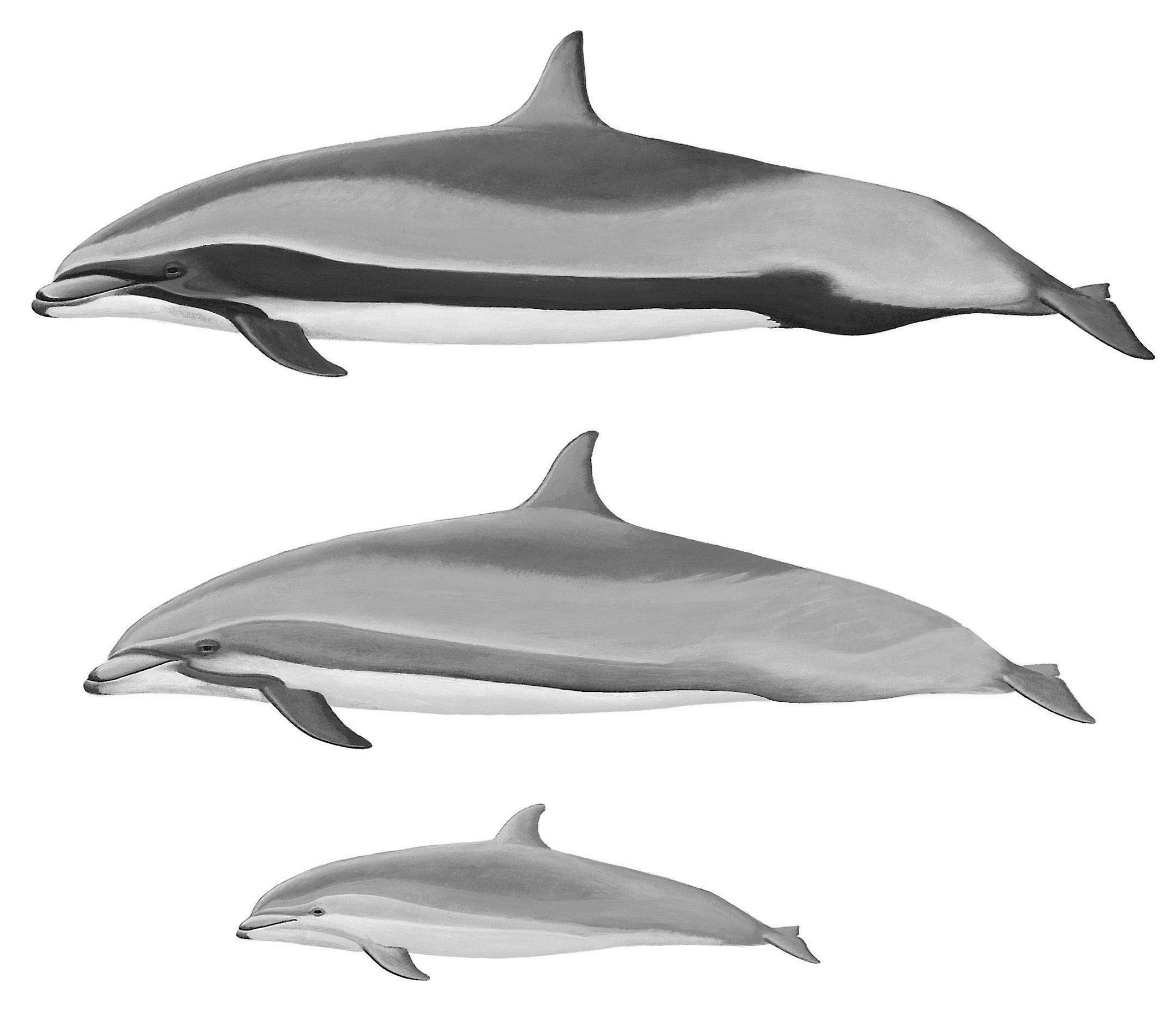FRASER'S DOLPHIN
Lagenodelphis hosei Fraser 1956
Order Cetacea : Family Delphinidae
DESCRIPTION. Robust dolphin with a very short beak (3–6 cm), small dorsal fin (maximum 22 cm high), and small flippers and flukes. Adult males reach 2.7 m in length and weigh at least 210 kg; females somewhat smaller. At birth, they are 105–110 cm in length. Adults develop a complex color pattern characterized by a dark cape, light gray or brownish sides, and a white belly sometimes with a pinkish hue; appendages all dark; a dark line on upper beak, a dark chin-to-flipper stripe, and a delphinid bridle with a dark line from the melon apex surrounding the eye; a gray stripe of variable intensity and width runs from the facial area to the anus. Variability in the side stripe appears to be geographic as well as age related. There are 34–44 small, sharp teeth in each tooth row; skull has deep grooves along the palate. Only common dolphins (Delphinus spp.) have palatal grooves as deep as Fraser's dolphins.

DISTRIBUTION. These are tropical and subtropical animals, occurring in deep waters beyond the continental shelf edge. The first record for this species in the Gulf of Mexico was a 1981 mass stranding in the Florida Keys. No other reports of the species were recorded until 1992, when the first sightings of live animals occurred.
SUBSPECIES. Monotypic species.
HABITS. These are very active animals, often seen traveling quickly, making splashy leaps, and turning the water's surface into a froth. Bow riding is rare in some areas but is a common behavior in the Gulf. They occur in large groups of several dozen to hundreds (or even thousands) of individuals. Fraser's dolphins often school with melon-headed whales. They feed primarily on small midwater fish and squid.
The reproductive biology is not well known. Gestation is a little over 1 year, and calves are born year-round, possibly with seasonal peaks in some areas. Males off the coast of Japan become sexually mature at about 7–10 years of age, females at 5–8 years. The lactation period is not known.
POPULATION STATUS. Common; strandings and observations. These tropical and subtropical dolphins appear to be more common in the Gulf of Mexico than anywhere else within their range. Fraser's dolphins occur in deep water beyond the continental shelf edge. Several sightings and at least three strandings (in Florida and Texas) have occurred since 1992 in the northern Gulf. They were sighted on several occasions during the GulfCet surveys in waters centering around 1,000 m (3,381 ft.) in the northern Gulf of Mexico.
CONSERVATION STATUS. Fraser's dolphins do not appear on the federal or state lists of concerned species. The IUCN lists their status as least concern. The species is widespread and abundant, and there have been no reported population declines or major threats identified.
From The Mammals of Texas, Seventh Edition by David J. Schmidly and Robert D. Bradley, copyright © 1994, 2004, 2016. Courtesy of the University of Texas Press.
Natural Science Research Laboratory
-
Address
Museum of Texas Tech University, 3301 4th street, Lubbock, TX 79409 -
Phone
806.742.2486 -
Email
nsrl.museum@ttu.edu

